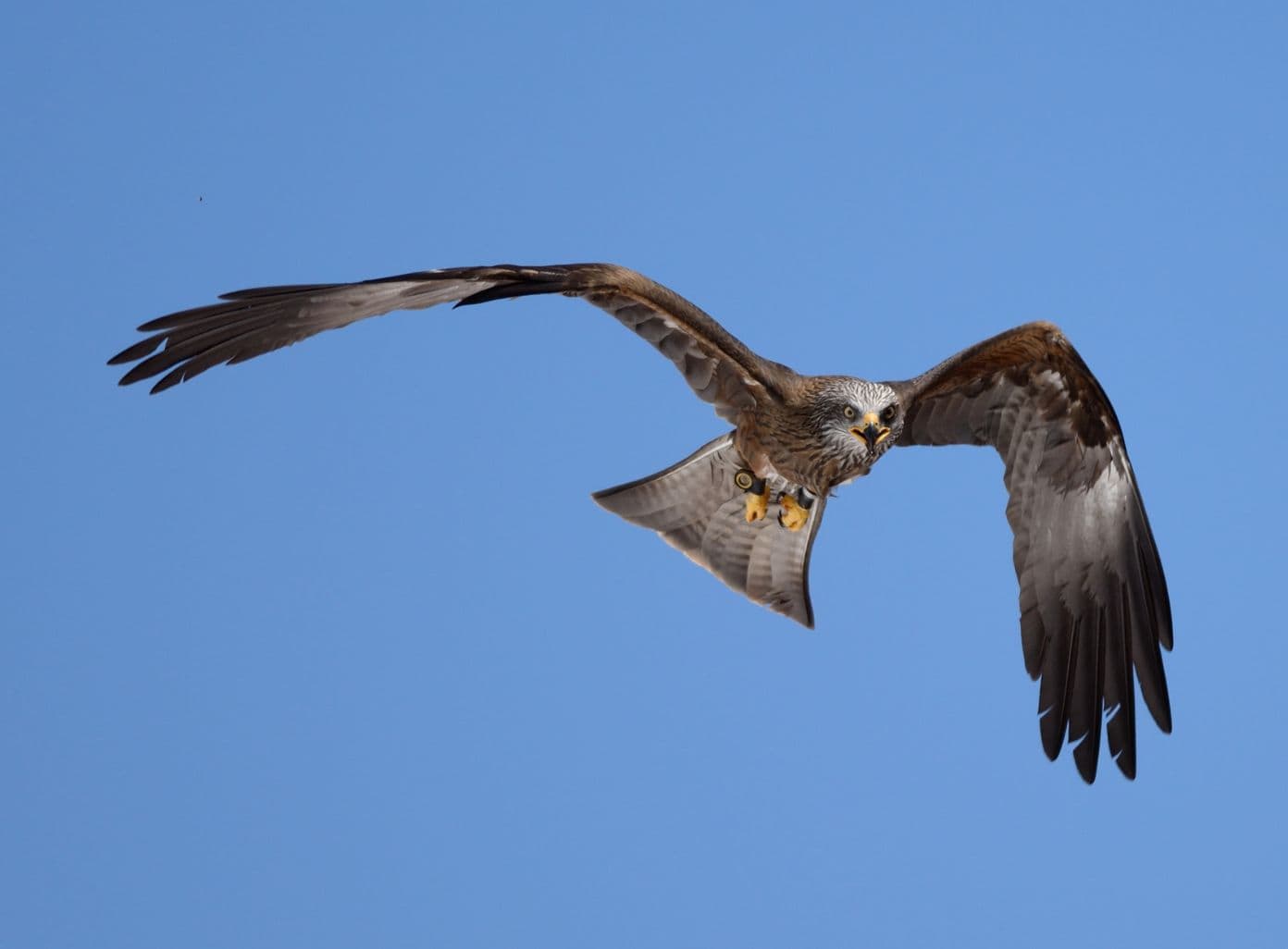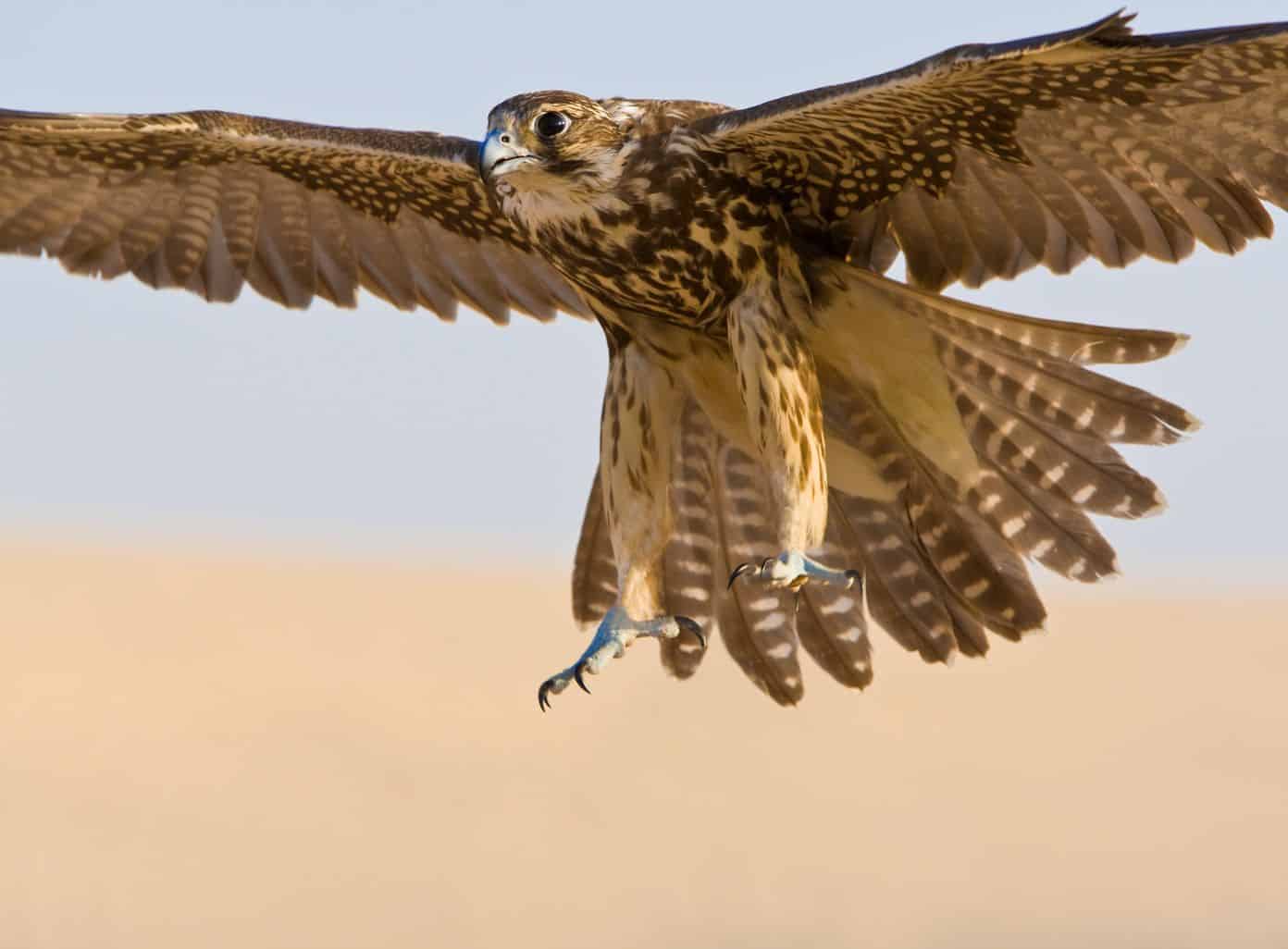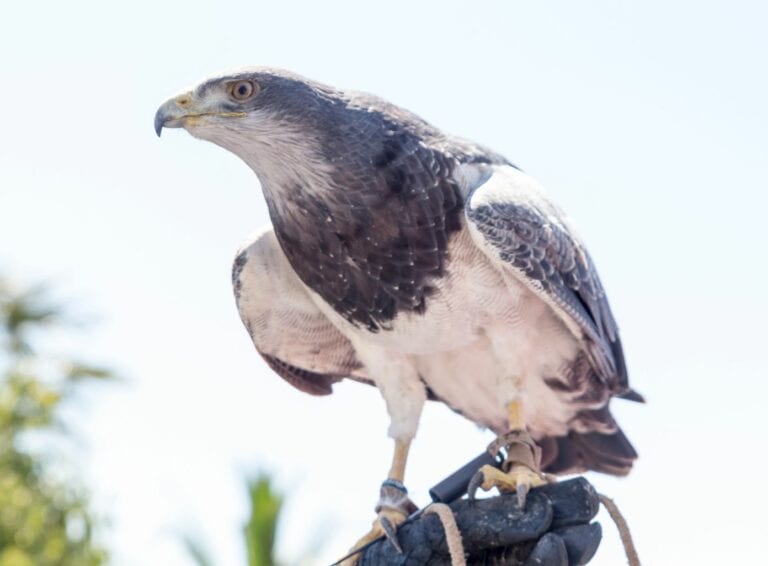The Fascinating World of Saudi Arabia Falconry
Introduction to Falconry
Falconry is an ancient art and sport that has been practiced for centuries. It involves the training and use of falcons to hunt prey, typically small game birds. In Saudi Arabia, falconry holds a special place in the hearts of the people, reflecting their deep connection with nature and their rich cultural heritage.

The Significance of Falconry in Saudi Arabian Culture
Falconry has deep cultural and historical significance in Saudi Arabian culture. It is not merely a sport or a hobby but an integral part of the country’s identity. Falcons are considered majestic creatures, embodying grace, strength, and speed. They have been revered for their hunting prowess and their ability to navigate vast desert landscapes.
Falconry has long been associated with the Bedouin way of life, reflecting the nomadic traditions of the Arabian Peninsula. Falcons were not only valued for their hunting skills but also served as loyal companions to the Bedouin people during their journeys across the deserts.
In Saudi Arabian culture, falconry is not just about the act of hunting. It symbolizes the harmony between humans and nature, showcasing the close relationship between man and bird. Falcons are seen as esteemed partners, with falconers developing a deep bond with their feathered companions.
Furthermore, falconry has become an integral part of Saudi Arabian heritage and is celebrated through various cultural events and festivals. These events provide an opportunity for falconers to showcase their skills and for the wider community to come together and appreciate the artistry and beauty of falconry.
By exploring the fascinating world of falconry in Saudi Arabia, one can gain a deeper understanding of the country’s cultural traditions and its connection to the natural environment. Falconry is not just a sport or a hobby; it is a testament to the respect and admiration that the people of Saudi Arabia have for these magnificent birds of prey.

Falconry in Saudi Arabia
Falconry holds a special place in the cultural heritage of Saudi Arabia, with a rich history that spans centuries. Let’s explore the historical background of falconry in Saudi Arabia and its significance as a traditional sport.
Historical Background of Falconry in Saudi Arabia
Falconry has a long-standing tradition in Saudi Arabia, dating back to ancient times. The art of falconry was practiced by Bedouin tribes as a means of survival and a way to connect with the vast desert landscape. Falcons were highly valued for their hunting abilities, aiding in the pursuit of prey such as hares, gazelles, and even larger birds.
Throughout history, falconry in Saudi Arabia evolved from a necessity to a symbol of prestige and power. Falcons were considered royal birds and were often gifted to kings and dignitaries as a sign of honor and respect. The birds were meticulously trained and cared for, with falconers passing down their knowledge and expertise from generation to generation.
Falconry as a Traditional Sport in Saudi Arabia
In Saudi Arabian culture, falconry is not only a historical practice but also a beloved traditional sport. Today, falconry continues to be an integral part of the country’s cultural fabric, and the sport is deeply respected and cherished.
Falconry events and competitions are held across Saudi Arabia, bringing together falconers from different regions to showcase their skills and compete for prestigious titles. These events serve as a platform to celebrate the beauty, grace, and intelligence of falcons, while also honoring the traditions and customs associated with the sport.
Falconry is more than just a sport; it represents a connection between humans and nature. It embodies the harmony between falconers and their falcons, as they work together in perfect synchronization to achieve hunting success. The sport also reflects the values of patience, discipline, and respect for the natural world.
As Saudi Arabia continues to embrace its rich cultural heritage, falconry remains an integral part of the country’s identity. The sport serves as a testament to the enduring traditions and the deep appreciation for the natural beauty of the Arabian Peninsula.
In the next section, we will explore the falconry practices and techniques employed in Saudi Arabia, shedding light on the training methods, equipment, and hunting techniques used by falconers. Stay tuned to learn more about the fascinating world of falconry in Saudi Arabia.
Falconry Practices and Techniques
Falconry is an ancient art that requires skill, patience, and a deep understanding of the relationship between the falconer and the falcon. In this section, we will explore the various practices and techniques involved in falconry, including training and taming falcons, the equipment used, and the hunting techniques and prey involved.
Training and Taming Falcons
Training and taming falcons is a vital part of falconry. Falcons are wild birds by nature, and it takes time and effort to establish a bond of trust between the falconer and the falcon. The training process begins when the falcon is still a young chick. Falconers employ a method called “imprinting,” where they become the primary caregiver for the falcon and create a strong bond during the crucial imprinting period.
During training, falconers use a variety of techniques, such as positive reinforcement and falconry equipment like jesses and leashes, to teach the falcon to respond to commands and return to the falconer’s glove. The training process can take several months or even years, depending on the falcon’s temperament and the desired level of obedience.
Equipment Used in Falconry
Falconry requires specialized equipment to ensure the safety and well-being of both the falcon and the falconer. Some essential equipment used in falconry includes:
- Jesses: These are leather straps that are attached to the falcon’s legs. Jesses allow the falconer to handle and control the bird safely.
- Leashes: Leashes are used to tether the falcon to a perch or the falconer’s glove. They provide an added level of security during training and hunting.
- Hood: A hood is a leather or fabric cover that fits over the falcon’s head, covering its eyes. It helps calm the bird and prevent it from getting startled during transport or when not actively hunting.
- Bells: Bells are attached to the falcon’s legs or equipment to help the falconer locate the bird’s whereabouts during flight.
- Lure: A lure is a specially designed device used for training falcons to return to the falconer. It is often made from feathers or fur and is used as a reward during training sessions.
Hunting Techniques and Prey
Falconry is primarily a hunting sport, and different falcons are trained to hunt different types of prey. The choice of prey largely depends on the falcon’s species, size, and natural hunting instincts. Common prey for falcons include small mammals like rabbits, squirrels, and rodents, as well as birds such as pigeons and game birds.
Hunting techniques vary depending on the type of prey being pursued. Falcons are known for their incredible speed and agility, utilizing their sharp talons and beak to capture their prey mid-flight. Falconers work alongside their falcons, using a combination of signals, whistles, and commands to direct the bird’s flight path and ensure a successful hunt.
Understanding these practices and techniques is essential for anyone interested in the captivating world of falconry. It showcases the unique bond formed between the falconer and the falcon, as well as the intricate skills and equipment required to participate in this ancient art. For more information on this topic, check out our article on saudi arabia falconry.
Falconry Events and Festivals
In Saudi Arabia, falconry events and festivals are a vibrant celebration of this ancient art form and a gathering of falconry enthusiasts from around the world. These events showcase the beauty and prowess of falcons, while also honoring the rich cultural heritage of Saudi Arabia. Let’s explore two popular aspects of falconry events and festivals: traditional falconry competitions and falconry festivals.
Traditional Falconry Competitions
Traditional falconry competitions are an integral part of Saudi Arabian falconry culture. These competitions bring together falconers to compete in various categories, showcasing the skills of their falcons. The competitions are carefully organized, following established rules and regulations.
One of the most prominent categories in these competitions is the “Silsalah” or falcon release competition. In this event, falconers release their trained falcons to chase after a prey lure, simulating a real hunting situation. The speed, agility, and accuracy of the falcon in capturing the lure are evaluated, with points awarded based on performance.
Another category is the “Jirnas”, which focuses on falconry techniques such as flying, landing, and returning to the falconer’s hand. The falcons are judged on their ability to respond to commands and exhibit disciplined behavior.
These competitions not only showcase the exceptional skills of the falcons but also provide an opportunity for falconers to exchange knowledge and techniques. They foster a sense of community and camaraderie among falconry enthusiasts, reinforcing the cultural significance of falconry in Saudi Arabia.
Falconry Festivals in Saudi Arabia
Falconry festivals in Saudi Arabia are grand celebrations that draw both locals and international visitors. These festivals offer a unique opportunity to witness the beauty and grace of falcons up close, while also experiencing the rich cultural traditions of Saudi Arabia. They often feature a range of activities and attractions that cater to falconry enthusiasts and curious onlookers alike.
At these festivals, visitors can witness awe-inspiring falconry displays, showcasing the incredible bond between falcon and falconer. Skilled falconers demonstrate various falconry techniques, including flying, hunting, and retrieving. These displays highlight the exceptional training and expertise required to master the art of falconry.
In addition to the falconry displays, falconry festivals also offer a glimpse into Saudi Arabian heritage through cultural performances, traditional music, and art exhibitions. Visitors can immerse themselves in the vibrant atmosphere, savor local cuisine, and explore traditional crafts and artifacts.
Some of the renowned falconry festivals in Saudi Arabia include the King Abdulaziz Falconry Festival and the Janadriyah Festival. These festivals attract falconry enthusiasts and tourists from around the world and provide an unforgettable experience of Saudi Arabian hospitality and falconry traditions.
Attending a falconry event or festival in Saudi Arabia is a remarkable opportunity to witness the captivating world of falconry and gain a deeper understanding of its cultural significance. It allows visitors to appreciate the grace, skill, and heritage associated with this ancient art form. Whether you are a falconry enthusiast or simply curious about this fascinating tradition, these events offer a truly unforgettable experience.
Conservation and Falconry
As an integral part of Saudi Arabian culture and heritage, falconry is accompanied by a strong commitment to conservation efforts and sustainable practices. Recognizing the importance of preserving birds of prey and their natural habitats, Saudi Arabia has implemented various initiatives to ensure the long-term survival of these magnificent creatures.
Conservation Efforts for Birds of Prey
Saudi Arabia has established numerous programs and organizations dedicated to the conservation and protection of birds of prey. These initiatives aim to safeguard the diverse species of falcons, hawks, and eagles that inhabit the Arabian Peninsula. By conducting research, monitoring populations, and implementing conservation strategies, these efforts contribute to the preservation of these remarkable birds.
Conservation organizations often collaborate with researchers, scientists, and local communities to develop comprehensive conservation plans. These plans involve monitoring bird populations, protecting nesting sites, and raising awareness about the importance of preserving these majestic creatures. The efforts also extend to promoting international cooperation to ensure the conservation of migratory birds that pass through Saudi Arabia.
Sustainable Falconry Practices
In Saudi Arabia, there is a strong emphasis on practicing falconry in a sustainable manner. This involves adhering to specific guidelines and regulations to ensure the well-being of the birds and maintain a healthy balance between falconry and conservation.
Falconers are encouraged to obtain their falcons through legal channels, such as captive breeding programs, rather than capturing wild birds. This practice helps to prevent the depletion of wild populations and supports the conservation of endangered species.
Additionally, falconers are educated about proper care and handling techniques to ensure the physical and mental well-being of their birds. Regular veterinary check-ups, appropriate housing, and a balanced diet are essential aspects of maintaining the health of these magnificent creatures.
By promoting sustainable falconry practices, Saudi Arabia strives to ensure that the ancient tradition of falconry can be enjoyed by future generations while protecting the natural world that these birds call home.
In conclusion, Saudi Arabia’s commitment to conservation and sustainable falconry practices is evident in its efforts to protect birds of prey and their habitats. Through conservation programs and the promotion of sustainable practices, Saudi Arabia aims to strike a harmonious balance between the cultural significance of falconry and the preservation of these magnificent creatures.
Experiencing Falconry in Saudi Arabia
Falconry Centers and Experiences
To fully immerse yourself in the captivating world of Saudi Arabian falconry, there are various falconry centers and experiences available throughout the country. These centers provide an opportunity for visitors to learn about the rich heritage and art of falconry while witnessing magnificent birds of prey up close.
At these centers, knowledgeable falconers guide visitors through the intricacies of falconry, sharing insights into the training, handling, and care of these majestic birds. You can observe the falcons in action, witnessing their incredible agility and grace during training sessions and flight demonstrations. It’s a truly mesmerizing experience that allows you to appreciate the beauty and skill involved in this ancient practice.
Some falconry centers also offer hands-on experiences, allowing visitors to hold or even fly a trained falcon under the guidance of an expert falconer. These interactive encounters provide a unique opportunity to connect with these magnificent creatures and gain a deeper understanding of their behavior and relationship with their handlers.
Etiquette and Respect for Falconry Culture
When experiencing falconry in Saudi Arabia, it’s important to adhere to the etiquette and respect associated with this cultural tradition. Here are a few guidelines to keep in mind:
- Dress modestly: As a sign of respect for local customs, it is recommended to dress modestly when visiting falconry centers or participating in falconry experiences. This includes covering the shoulders, knees, and avoiding revealing or tight-fitting clothing.
- Follow instructions: Listen carefully to the instructions provided by the falconer or staff at the falconry center. They will guide you on how to interact with the birds and ensure the safety of both visitors and the falcons.
- Ask permission: Always seek permission before touching or holding a falcon. These birds are highly trained and have a close bond with their handlers. It’s important to treat them with care and respect.
- Maintain a respectful distance: While observing the falcons, maintain a safe distance and avoid sudden movements or loud noises that may startle the birds. This helps to create a calm and comfortable environment for both the falcons and other visitors.
- Photography etiquette: If you wish to take photographs, ask for permission before doing so. Some falconry centers may have specific guidelines or restrictions regarding photography, especially during training sessions or private events.
By following these guidelines, you can ensure a respectful and enjoyable experience while exploring the wonders of falconry in Saudi Arabia. Remember, falconry is not just a sport but a cherished cultural tradition that holds deep significance in Saudi Arabian heritage.
For more information on attractions and activities in Saudi Arabia, including falconry and other cultural experiences, visit our comprehensive Saudi Arabia travel guide.


